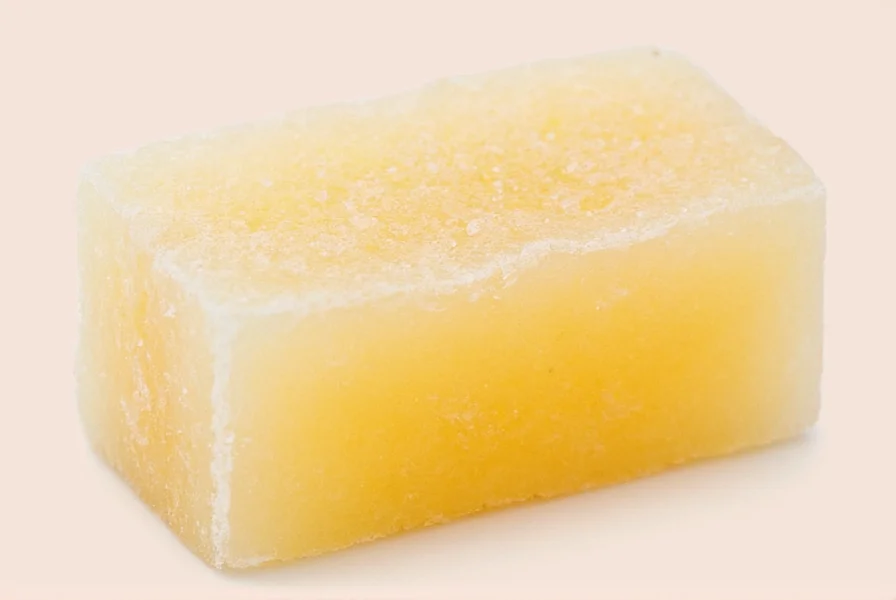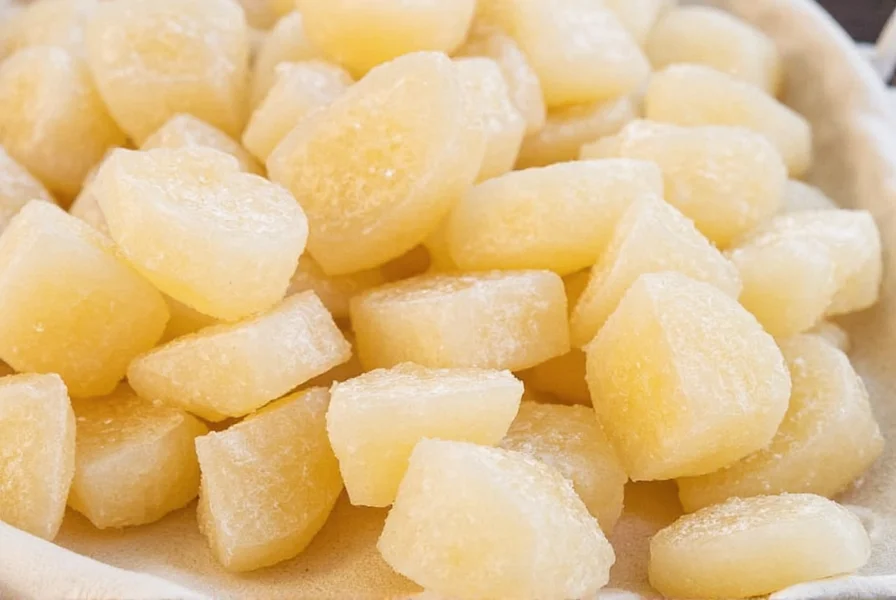Ginger coconut candy represents a perfect harmony of contrasting flavors and textures that has made it a beloved treat worldwide. This confection brings together the pungent, warming qualities of ginger with the creamy sweetness of coconut, resulting in a snack that's both invigorating and comforting. The ginger provides a distinctive spicy kick that stimulates the senses, while the coconut offers a smooth, rich counterpoint that mellows the heat.
What sets authentic ginger coconut candy apart is the careful balance between these two primary ingredients. High-quality versions use real crystallized ginger rather than artificial flavorings, preserving the natural compounds that give ginger its characteristic warmth and potential health benefits. The coconut component is typically made from fresh or desiccated coconut flesh sweetened with cane sugar or palm sugar, depending on regional variations.
The texture profile of ginger coconut candy deserves special attention. Well-crafted versions offer a satisfying chewiness from the coconut base, punctuated by the tender-crisp bite of properly candied ginger. This textural interplay significantly contributes to the overall sensory experience, making each piece a multi-dimensional delight for the palate.

Historical Origins and Cultural Significance
Ginger coconut candy has roots in multiple culinary traditions, with variations appearing across Southeast Asia, the Caribbean, and Pacific Island cultures. In many of these regions, both ginger and coconut have been staple ingredients for centuries, valued not only for their flavor but also for their perceived medicinal properties.
In Asian culinary traditions, ginger has long been used to aid digestion and combat nausea, while coconut provides essential fats and hydration. The combination naturally evolved as a way to make the potent ginger more palatable, particularly for children or those with sensitive stomachs. Traditional preparation methods often involved slow-cooking ginger in sugar syrup until it became tender and translucent, then mixing with freshly grated coconut.
Nutritional Profile and Health Considerations
While ginger coconut candy is undoubtedly a sweet treat, it carries some potential health benefits derived from its primary ingredients. Ginger contains gingerol, a bioactive compound with anti-inflammatory and antioxidant properties. Regular consumption of ginger has been associated with improved digestion, reduced nausea, and potential relief from muscle pain.
| Nutrient | Per 30g Serving | Primary Source |
|---|---|---|
| Calories | 120-150 | Coconut & sugar |
| Total Fat | 6-8g | Coconut |
| Carbohydrates | 18-22g | Sugar & fiber |
| Dietary Fiber | 1-2g | Ginger & coconut |
| Gingerol Content | Varies | Ginger component |
It's important to note that while ginger offers potential health benefits, ginger coconut candy remains a sugar-sweetened confection. The sugar content necessary for preservation and palatability means it should be enjoyed in moderation as part of a balanced diet. Those seeking the health benefits of ginger without added sugars might consider ginger tea or fresh ginger preparations instead.
Regional Variations of ginger coconut candy
Across different cultures, ginger coconut candy appears in numerous distinctive forms:
- Asian variations: Often feature palm sugar instead of cane sugar, giving a deeper caramel-like flavor. Some versions include pandan leaf for additional aroma.
- Caribbean interpretations: Typically use fresh coconut and may incorporate rum or other spirits into the candy-making process.
- Pacific Island specialties: Frequently include additional tropical elements like banana or taro for complexity.
- Modern artisanal versions: May feature organic ingredients, reduced sugar content, or innovative flavor additions like chili for extra heat.
How to Select Quality ginger coconut candy
When choosing ginger coconut candy, several factors indicate quality:
- Look for products listing real ginger and coconut as primary ingredients rather than artificial flavors
- Check for minimal additives and preservatives
- Consider the ginger-to-coconut ratio based on your flavor preference
- Examine texture—high-quality versions should have a satisfying chew without being overly hard or crumbly
- Read ingredient lists for natural sweeteners versus high-fructose corn syrup
For those interested in homemade ginger coconut candy, the process requires patience but yields superior results. Properly candying ginger involves multiple cooking and steeping stages to mellow its sharpness while preserving its distinctive flavor. The coconut component should be freshly prepared when possible, as pre-sweetened coconut often contains unnecessary additives.
Perfect Pairings for ginger coconut candy
This versatile confection pairs beautifully with various beverages and foods:
- Tea pairings: Complements black teas, particularly chai or Earl Grey, where the spices echo the ginger notes
- Coffee companions: Balances well with medium-roast coffees that have chocolate or caramel notes
- Dessert enhancements: Makes an excellent topping for vanilla ice cream or coconut sorbet
- Culinary uses: Can be chopped and incorporated into cookie dough or cake batters for added texture and flavor
Frequently Asked Questions
What makes ginger coconut candy different from regular ginger candy?
Ginger coconut candy uniquely combines crystallized ginger with sweetened coconut, creating a balance of spicy and sweet flavors with contrasting textures. Regular ginger candy typically features only ginger preserved in sugar syrup, offering a more intense, singular ginger experience without the creamy coconut element that defines ginger coconut candy.
Is ginger coconut candy suitable for people with dietary restrictions?
Traditional ginger coconut candy is naturally gluten-free and vegan, making it suitable for many dietary restrictions. However, those monitoring sugar intake should consume it in moderation as it contains significant sugar content. Always check ingredient labels for potential allergens or additives, especially if purchasing commercially produced varieties.
How should I store homemade ginger coconut candy to maintain freshness?
Store homemade ginger coconut candy in an airtight container at room temperature for up to two weeks. For longer storage, keep it in the refrigerator for up to one month or freeze for up to three months. Place parchment paper between layers to prevent sticking. Properly stored ginger coconut candy maintains its texture and flavor best when protected from moisture and temperature fluctuations.
Can I make ginger coconut candy without refined sugar?
Yes, you can create a less refined version of ginger coconut candy using natural sweeteners like coconut sugar, maple syrup, or date paste. These alternatives provide sweetness while adding their own flavor dimensions. The texture may differ slightly from traditional recipes, and the shelf life might be shorter, but many find these versions preferable for their more complex flavor profiles and lower glycemic impact.
What are the traditional medicinal uses of ginger coconut candy?
In traditional medicine systems, ginger coconut candy has been used to soothe digestive discomfort, alleviate nausea (particularly during travel), and provide relief from mild sore throats. The ginger component offers anti-nausea properties, while the coconut provides soothing qualities. Many cultures have incorporated this candy into home remedies, though it should not replace professional medical treatment for serious conditions.











 浙公网安备
33010002000092号
浙公网安备
33010002000092号 浙B2-20120091-4
浙B2-20120091-4